Nearly Full Moon Rising
Our moon is especially beautiful and bright tonight. Notes: AstroTech 6" Ritchey–Chrétien f/9 1350mm, Nikon D750 32 x 1/500 sec, ISO 3200, stacked in AutoStakkert 3.0.14.
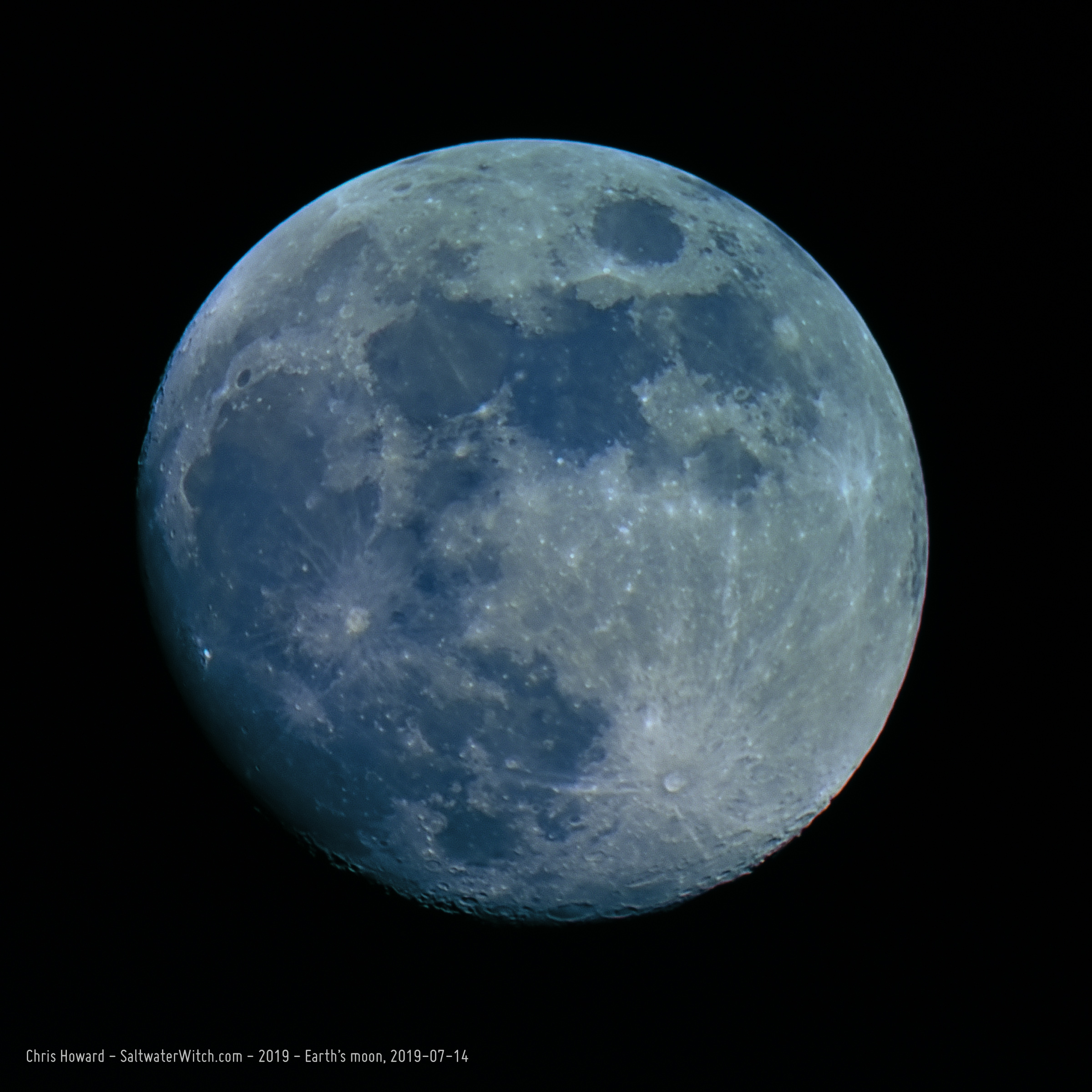
What's cool, is Jupiter is just up along the ecliptic from the moon, and I swung the same setup there and captured a very dim shot of our system's largest planet along with three moons, Europa, Io, and Ganymede.

Another one from earlier this evening, a plane flying through while I was setting the focus on the Nikon/AstroTech.
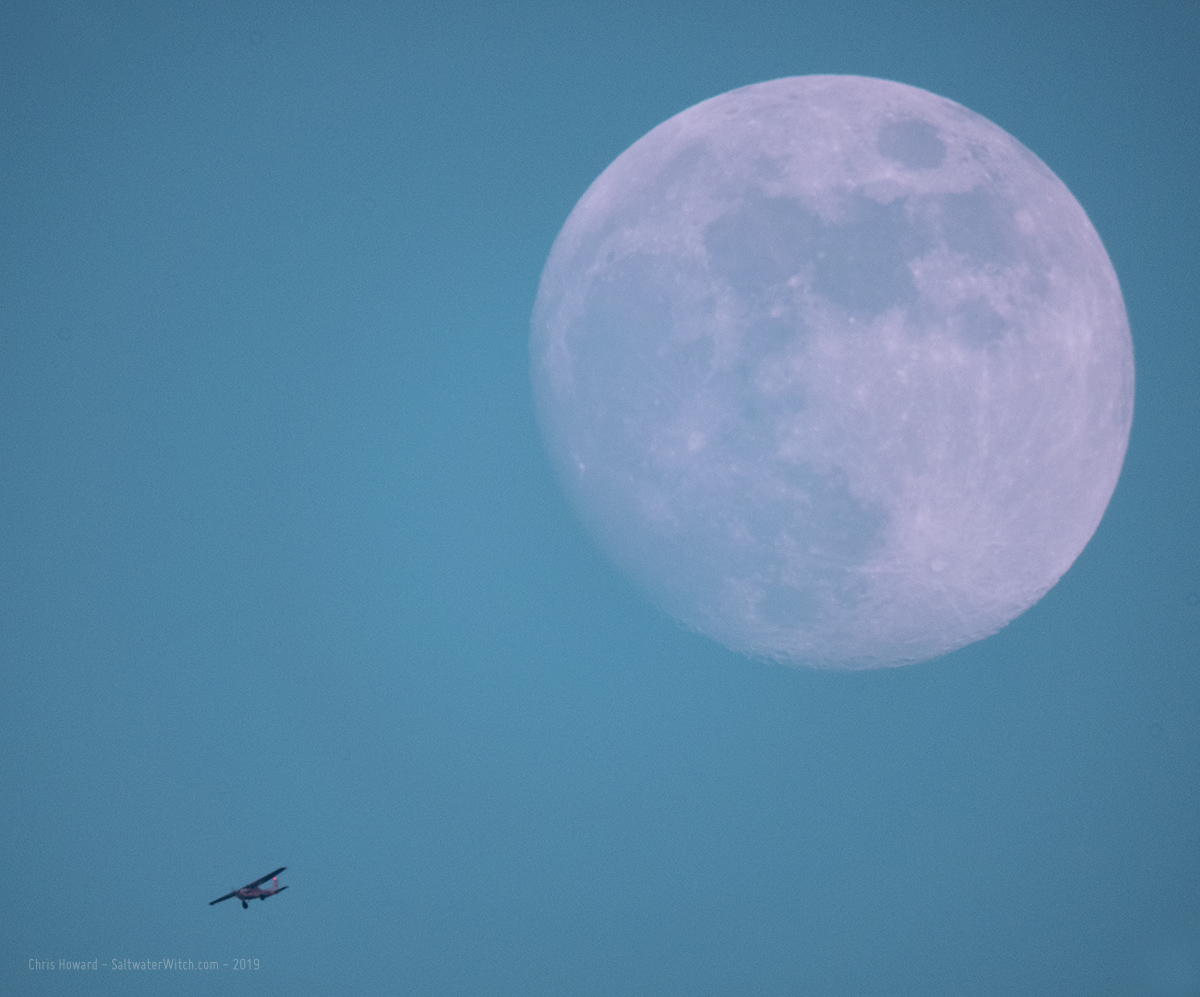
Posted July 16, 2019
Oversampling for fun and [probably no] profit
Tonight I'm testing out the ZWO ASI071 and the AstroTech RC6, with an Off-Axis Guider (QHY5iii178 guide camera binned 2x2). I've never tried this mix together, so we'll see how it goes. At 1350mm focal length this setup has a 0.73/pixel resolution. So, yeah, it's going to be oversampled. And there's also a big old gibbous moon out tonight, and the weather is not planning to cooperate. My hopes are fairly low.
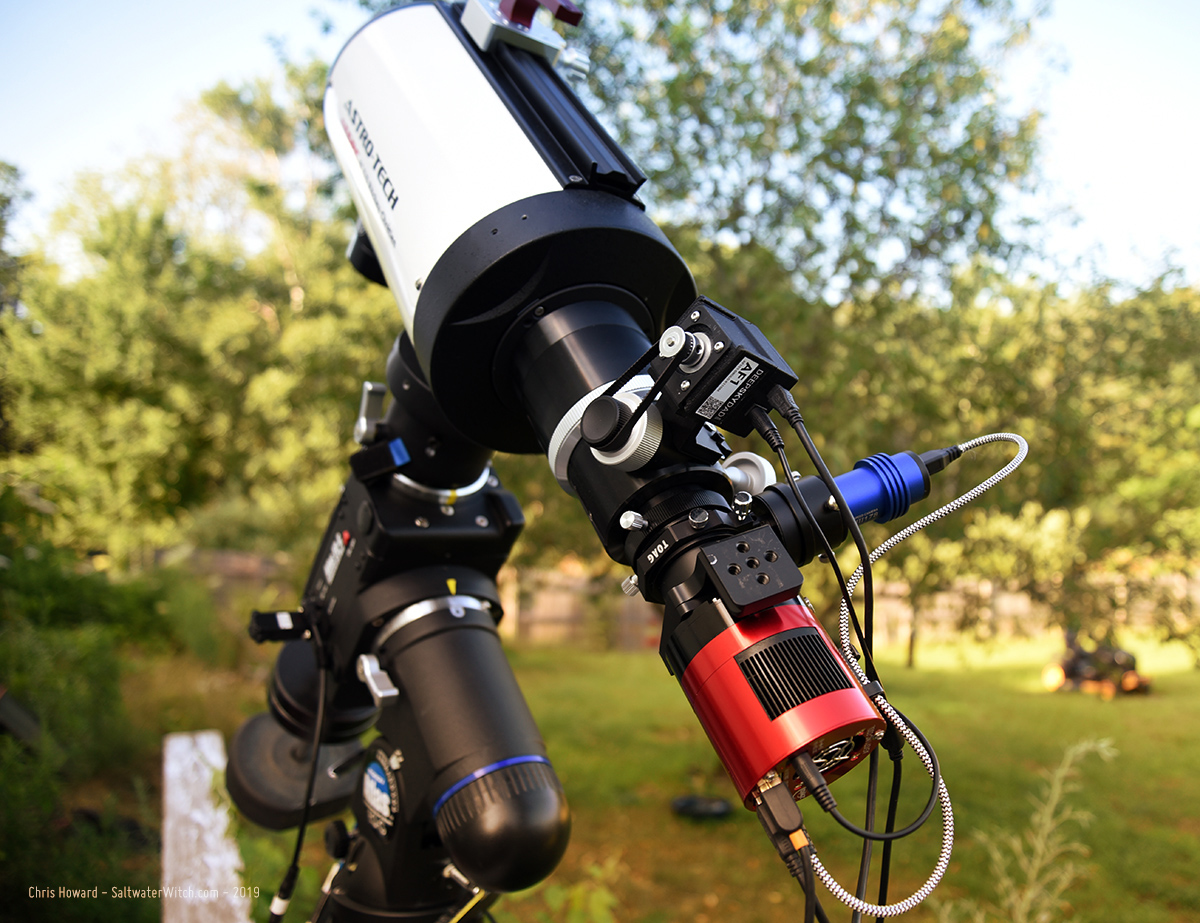
Posted July 13, 2019
Short nights, narrow bands, works in progress
We probably have less than four hours of seriously dark night this time of year--at my location, coastal New Hampshire. And you have to make do with that. So, last night I spent every minute on hydrogen-alpha frames for three targets, Sh 2-54 (with the star cluster NGC 6604 in the center), NGC 7830 Wizard Nebula, and NGC 281 Pacman Nebula. I went through each of these and shot 30 x 180 second exposures, starting around 10:30 pm, which is still a bit within astronomical twilight.
The nebula Sh2-54 is about 5000 lightyears away in the constellation Serpens. It's part of a long band of nebulosity that extends almost ten degrees through the Eagle Nebula (M16) and Swan/Omega Nebula (M17) below that. NGC 6604 is the cluster of stars above and to the right of the brightest knot of the nebula. Imaging notes: 30 x 180 sec Ha sub stacked in DSS and processed in Photoshop CC.
NGC 7830 is the star cluster surrounded by the Wizard Nebula, an HII region about 7200 lightyears away in the constellation Cepheus. This is 30 stacked 3 minute exposures, no calibration frames.
NGC 281, called the Pacman Nebula for obvious reasons is an HII region in Cassiopeia. Pacman has some amazing features including a batch of really distinct Bok Globules, those small dark nebulae full of cosmic dust that may be playpens for newborn stars. William Optics GT81, ZWO ASI1600MM-Pro, Astronomik Ha 6nm filter, 30 stacked 3 minute exposures, no calibration frames.
NGC 281 Pacman nebula in Ha:

NGC 7380 star cluster surrounded by the "Wizard Nebula" in Ha:
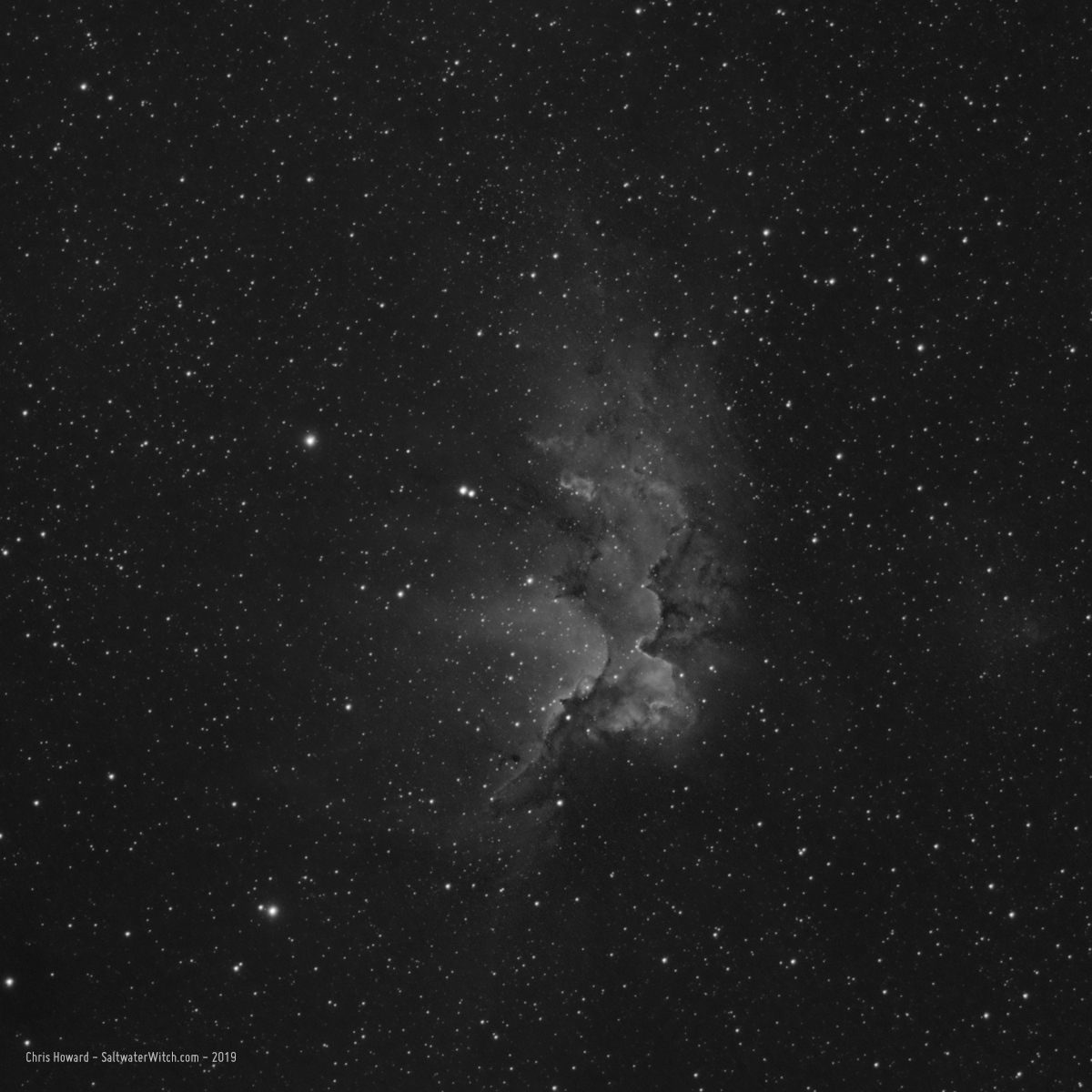
Sh2-54 Nebula and NGC 6604 open star cluster in Ha:

Posted July 9, 2019
DIY Pegasus Astro Pocket Powerbox (almost)
Tonight I'll be testing out the prototype for my DIY version of the Pegasus Astro Pocket Powerbox--well, a manual operation version. There's no ASCOM or INDI support, but with what I've put together here--12vdc line in, 3 x regulated 12v dc 4 amp out, 2 x PWM-controlled dew control RCA jacks (potentiometer with the silver knob controls output temp). Add an Arduino, a few relays, and a temp sensor and I can build all the powerbox features I use. One reason I'm going down this path (I have a pocket powerbox on my GT81 narrowband setup and I love it) is that the Pegasus Astro version doesn't provide 5v dc output, and I want 5v with up to 4 amps out to power the Raspberry Pi 4 + 4GB RAM I'll be building out later this year, running INDI/Ekos/Kstars or Stellarmate. There's also a big price difference. I threw this together for about 15 USD, and I think I paid $180 for the PPB. I'll let you know how it goes!

Here's my test setup for tonight--testing the DIY Pocket Powerbox. This is my ZWO ASI071MC with a Nikon 180mm f/2.8 lens, ZWO ASI120MM-S + 130mm guiding, on my trusty old iOptron CEM25P mount. That's my prototype pocket powerbox on the back, behind the main imaging camera. I'm going to be doing some long exposure color shots in Vulpecula--Sh 2-92, NGC 6820.
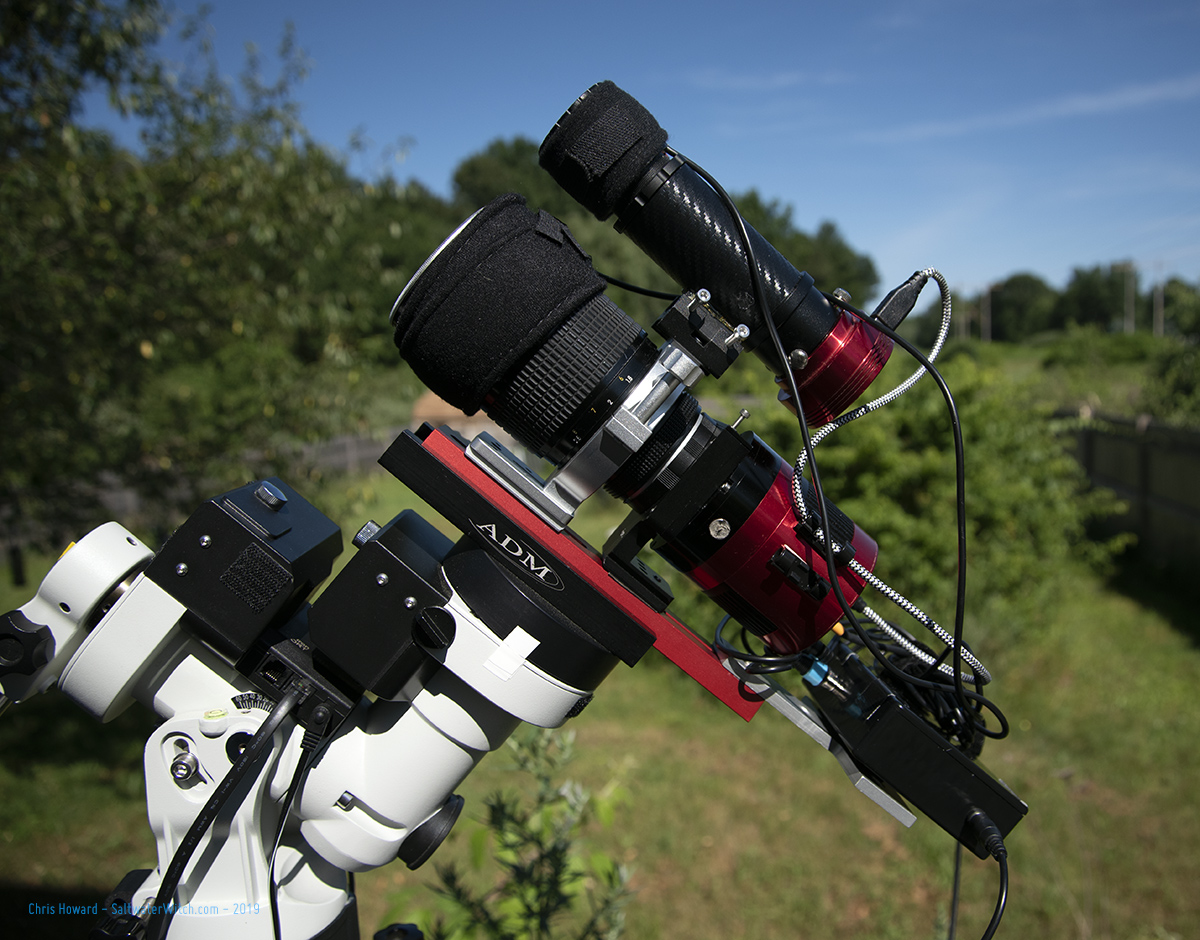
Posted July 7, 2019
Wide Field, Narrow Band
Going to run some manual focus tests on my wide-field narrowband setup, if I can see the stars tonight. I just want to see if I have the backfocus correct for the Nikon f/2.8 180mm lens. I'm using a 2" Optolong 7nm Ha filter with the Atik 414EX mono CCD camera. No guiding with this tonight, but normally I would have the 130mm guide-scope and ZWOASI120MM-S on top of the aluminum camera/lens ring (ZWO 78mm Holder Ring for ASI Cooled Cameras). My hydrogen-alpha filter is in the AstroShop 2" Filter Drawer System with the tripod foot, which just adds more stability to this setup. You may also notice--if you're familiar with the iOptron CEM25P--that I'm using the short counterweight bar with a single weight. I can carry this whole rig around without taking anything apart.

Posted July 5, 2019
Lion's Mane in Cepheus
Work-in-progress for Sh 2-132 "Lion's Mane" emission nebula on the border between Cepheus and Lacerta, about 10,000 lightyears away, and over 300 lightyears in diameter. This is why Cepheus is such a wonderful constellation. The Lion's Mane is another giant HII region with ionization partially provided by two Wolf-Rayet stars, WR 152 and WR 153, which have blown out the rings you see in the image. I'm in the middle of capturing data for this. This is a fairly dim object--I only have about half the frames I want for Ha and OIII, and I haven't even started SII capture yet. Here's a bi-color Ha+OIII for the subs I've captured so far. William Optics GT81 APO refractor, ZWO ASI1600MM-Pro mono camera, Astronomik filters, iOptron CEM25P mount.

Posted July 5, 2019
Lobster Claw Nebula in Ha + OIII
The "Lobster Claw Nebula" (Sh 2-157), an emission nebula in Cassiopeia, and Sh 2-157a a ring nebula around the Wolf-Rayet star WR 157. I finally captured hydrogen-alpha and oxygen-3 frames for one of my favorite Sharpless catalogue objects. I will come back later in the year to get better OIII frames and an SII set. I didn't get to the underside of Cepheus--or the borderlands between Cepheus and Cassiopeia until 1:30 am, and by then I only had an hour and a half of astronomical night left. This time of year the sky begins brightening at 3:30am, which makes it tough to get to some of these later objects.

Posted July 3, 2019
Elephant Trunk Nebula
I hung around Cepheus and shot several hours of sub-exposures last night, mostly focused on IC 1396, the "Elephant Trunk Nebula", which is easy to make out near the center of the frame. This giant ionized gas region in Cepheus has some amazing dark bands of dust and other interstellar debris, blocking the light of more distant stars. Like there's that little guy on the right I want to call the "Harry Potter casts an Imperio" nebula. Imaging notes: bi-color made up of 48 stacked subs in Ha and OIII, William Optics GT81 APO refractor, ZWO ASI1600MM-Pro mono camera, Astronomik filters, iOptron CEM25P mount.
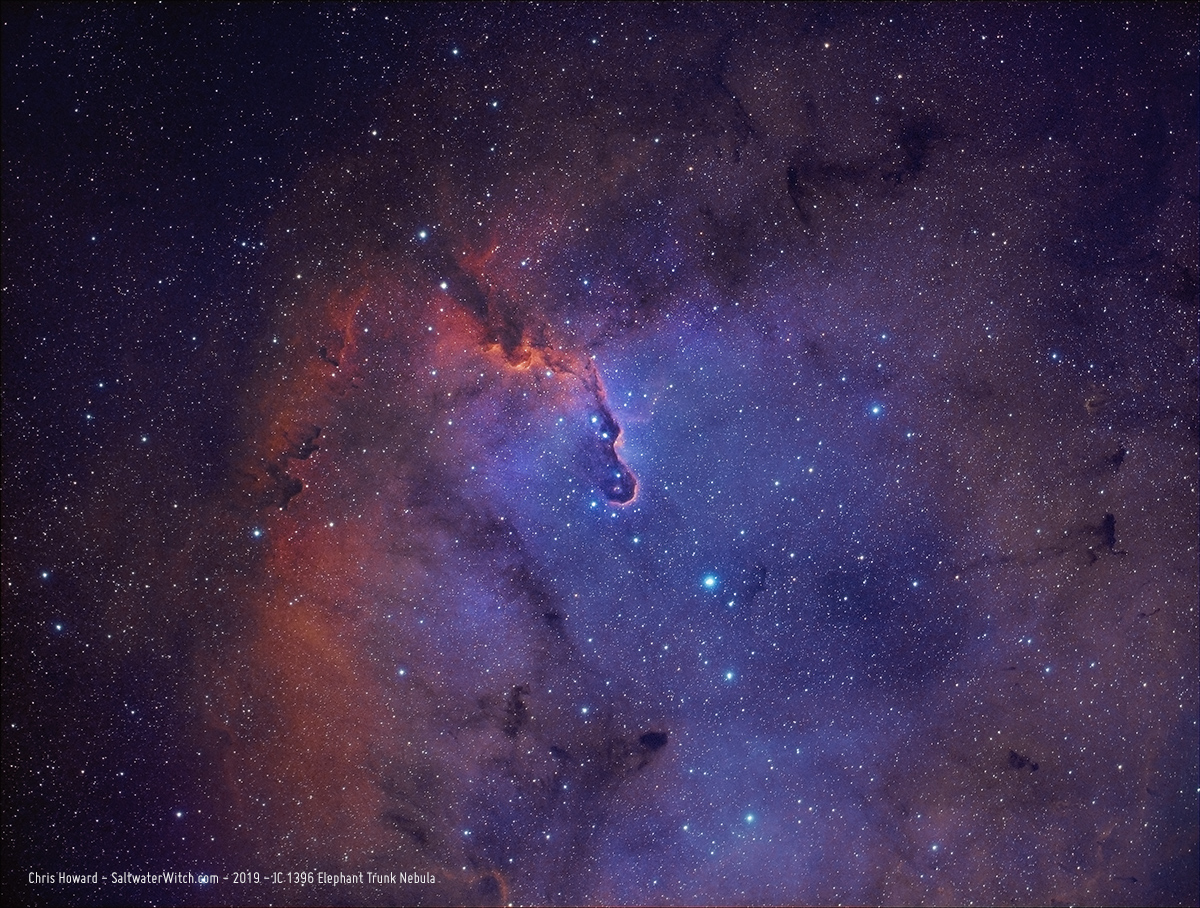

I also shot RGB subs. Here's the HaRBG:

